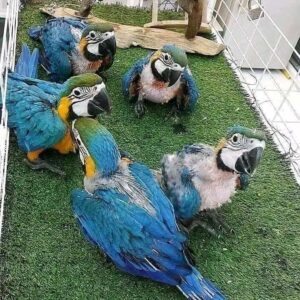
- by FPABS-Admin
- 0
- Posted on
The True Nature of Parrots
The True Nature of Parrots more than 300 species of parrots, ranging from budgies, cockatiels, and conures, to the larger amazons, macaws, and cockatoos, are found the world over, from the rainforests of South America and the islands of the South Pacific and Caribbean, to the deserts and grasslands of Australia and Africa. Whether capture in the wild or born in captivity, parrots are not domesticat animals like cats and dogs. They are still wild, undomesticate creatures at most only a few generations remove from their native habitats.
Parrots: Wild at Heart
In the wild, parrots live in flocks and can fly many miles each day. They spend hours foraging for a variety of natural foods, socializing, communicating, bathing, preening, establishing nesting territories, mating, excavating nests, and raising their young.
Even under the best of circumstances—a home with plenty of physical stimulation, toys and objects to play with and chew, a proper diet, and companionship with humans – life in captivity is still a pale shadow of the life that parrots evolved to live in their natural habitats. The average captive parrot spends most of his or her life confined to a cage and is fed a monotonous, incomplete diet of manufactured bird foods. Many cannot fly because their wings have been clip to keep them under control and to prevent them from hurting themselves by flying into walls and windows, chewing on household objects and getting into other hazards. Few are keep in groups with their own species.
The Challenges of Parrots as Companion Animals
The True Nature of Parrots captive parrots are still wild by nature. Their natural curiosity sensitivity intellect and ability to form bonds with humans can tempt people to keep them in their homes. Unfortunately, the traits that make parrots so intriguing are the same ones that make them extremely difficult to live with as companion animals. Most people cannot cope with the long-term. Challenges and responsibilities of caring for an animal that is physically and psychologically adapted to live in the wild, nor can they realistically provide an environment compatible with a parrot’s natural lifestyle.
Screaming and Social Demands
The True Nature of Parrots i n the wild, parrots live and travel in flocks and maintain constant contact with their flock mates, using loud calls as a means of communication. To avoid separation anxiety which can manifest in behavioral problems in a captive environment. Birds require hours of daily social interaction with their human companions as well as with other birds. There is no such thing as a quiet, independent parrot!
n the wild, parrots live and travel in flocks and maintain constant contact with their flock mates, using loud calls as a means of communication. To avoid separation anxiety which can manifest in behavioral problems in a captive environment. Birds require hours of daily social interaction with their human companions as well as with other birds. There is no such thing as a quiet, independent parrot!
